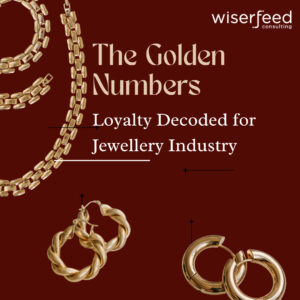In recent years, India has witnessed a remarkable surge in the adoption of electric scooters as a viable mode of transportation. As concerns about pollution, traffic congestion, and rising fuel costs continue to mount, electric scooters have emerged as a greener, more efficient, and cost-effective solution for urban commuting.
The user base of electric scooters in India is diverse and expanding. Here are some of the key segments of users who have embraced electric 2-wheelers:
- Commuters: Electric scooters have become a preferred mode of transportation for daily commuters. With the ability to navigate through traffic easily and the advantage of cost savings, commuters find electric scooters efficient for short to medium distance travel. Whether it’s office-goers, students, or individuals running errands, electric scooters provide a reliable and time-saving solution for their daily travel needs.
- Delivery Services: The rise of online shopping and food delivery platforms has created a surge in demand for electric scooters among delivery personnel. Companies offering delivery services often opt for electric scooters due to their low operational costs and environmental benefits. Electric scooters allow delivery riders to efficiently navigate congested city streets, making timely deliveries while reducing the carbon footprint associated with delivery operations. For example, Zomato partnered with Zypp Electric to deploy electric scooters for last mile delivery.
- Shared Mobility Providers: The emergence of electric scooter sharing services has gained popularity in several cities across India. These services allow users to rent electric scooters for short trips and pay on a per-minute or per-hour basis. Electric scooter sharing is particularly popular among tourists, occasional riders, and those who prefer not to own a vehicle. Shared mobility providers play a crucial role in promoting sustainable transportation options and reducing private vehicle usage. Examples are Yulu in India and Bondi, GO sharing, Felyx, etc in other countries.
- Environmental Enthusiasts: Electric scooters attract individuals who are environmentally conscious and seek greener alternatives for their transportation needs. These users are driven by the desire to reduce their carbon footprint and contribute to a cleaner and healthier environment. By choosing electric scooters, they actively participate in the transition to sustainable mobility and demonstrate their commitment to environmental stewardship.
- High Performance: Recently high performance electric bikes have come into the spotlight for being fast as well as environmentally friendly. These usually have unique and fashionable looks. With electric mobility comes access to instant torque and thus much greater accelerations than conventional super bikes. Examples are UltraViolette, Matter, Tork Motors, BMW, etc.

The reasons for such a sudden growth in the sales of Electric scooters are
- Environmental Friendly commuting: With the country facing severe air pollution challenges in many cities, electric scooters offer a clean alternative to conventional petrol or diesel-powered two-wheelers. By running on electricity, they produce zero tailpipe emissions, reducing the carbon footprint and improving air quality.
- Cost effective solution: The cost of electricity per kilometer is significantly lower than that of petrol or diesel, resulting in substantial savings for riders. Additionally, electric scooters require less maintenance due to their simpler design and fewer moving parts, reducing the overall ownership costs.
- Government initiatives: The Faster Adoption and Manufacturing of (Hybrid &) Electric Vehicles (FAME) scheme, launched in 2015, offers subsidies and incentives to buyers of electric scooters, making them more affordable. Additionally, state governments have implemented measures such as exemption from road tax, reduced registration fees, and priority parking for EVs, further encouraging their usage.
- Technological Advancements and Improved Infrastructure: Lithium-ion batteries, which power most electric scooters, have become more efficient, providing longer ranges and quicker charging times. Moreover, the installation of public charging stations in various cities has alleviated concerns about range anxiety, making electric scooters a practical choice for longer commutes.
Charging Infrastructure
Charging plays an important part in the usage of electric scooters.
Slow charging, also known as regular charging or Level 1 charging, involves using a standard household power outlet (typically 220V-240V) to charge the electric scooter’s battery. Here are the key aspects –
- Slow charging time (6-8 hrs avg for 0-100%)
- High compatibility, allows users to charge their vehicles at their homes/offices
- High availability as need normal power outlets (22–240V)
- Very affordable as no extra expenditure on infrastructure
- Makes sense for daily commuting
Fast charging, also known as Level 2 charging, involves specialized charging equipment and higher power supply to recharge electric scooter batteries at a faster rate. Here are the key aspects –
- Very fast charging time (1-3 hrs avg for 0-100%)
- Require dedicated charging infrastructure (330-440V)
- Highly convenient and reduce range anxiety
- Low availability because of high installation costs
- Can be harmful for the battery longevity due to overheating concerns
- Makes sense for long distance travel

Current State of Fast Charging Infrastructure
There are more than 6500 electric charging stations currently in operation in India. This gives an EV vehicle/ charging station ratio of 390, where ideally it should be 6-20. But India does not need that many charging stations, the reason being high market share of 2 & 3 wheeler EV, for whom slow charging is sufficient for daily needs. More steps need to be taken to make residential structures more compatible with charging facilities, like electric sockets in the parking area. Fast charging is highly needed for long distance commuters. Here is the future for public fast charging in India.
- Government Initiatives: The Indian government has recognized the importance of charging infrastructure for electric vehicles (EVs) and has taken several initiatives to promote its development.
- Public Sector Undertakings (PSUs): State-owned PSUs, such as Energy Efficiency Services Limited (EESL) and Bharat Heavy Electricals Limited (BHEL), have been actively involved in setting up electric vehicle charging infrastructure, including fast charging stations.
- Private Sector Participation: Several private players are investing in the deployment of fast charging infrastructure across the country. Companies like Tata Power, Ather Energy, and Okaya Power are setting up fast charging stations in strategic locations, including shopping malls, petrol pumps, and commercial complexes.
- Partnerships and Collaborations: To accelerate the growth of fast charging infrastructure, collaborations between government bodies, private companies, and industry associations have emerged. For example, EESL has partnered with urban local bodies and municipalities to install charging infrastructure in selected cities.
- Integration with Existing Infrastructure: Charging stations are being integrated into parking facilities, such as shopping malls and office complexes, allowing users to conveniently charge their electric scooters while attending to their daily activities.
Challenges being faced in this sector:
- Frequent power cuts in Tier 2 & 3 cities and Rural India
- Range anxiety
- Lack of standardization
- High investment and scalability
- Grid capacity and stability
Battery capacities
There are two kinds of electric scooters available in the market, daily need low capacity and long distance high capacity scooters. Low capacity ones have a battery capacity of around 1 kWh and give a range of about 70 kms. High capacity ones have a battery capacity of around 3 kWh and give a range of about 110 kms. These figures differ from model to model however, and this is just to get an idea.
Understanding the actual needs
While fast charging infrastructure might sound appealing and set as a measure of development by western countries, it is important to understand the context. Fast charging is vital for 4 wheeler movement spanning across cities, but for last mile connectivity a decent 70 km range is sufficient for a day of traveling. And during night the vehicle can be charged for use the next day. Electric scooters in India are primarily filling the last mile connectivity gap, and even slow charging will not be much of an obstruction to adoption of ev scooters. The need of the hour is availability of ample electric sockets in parking facilities, a reliable supply of electricity to tier-2 and 3 cities and subsidies on electricity for charging in states with a higher electricity price.





